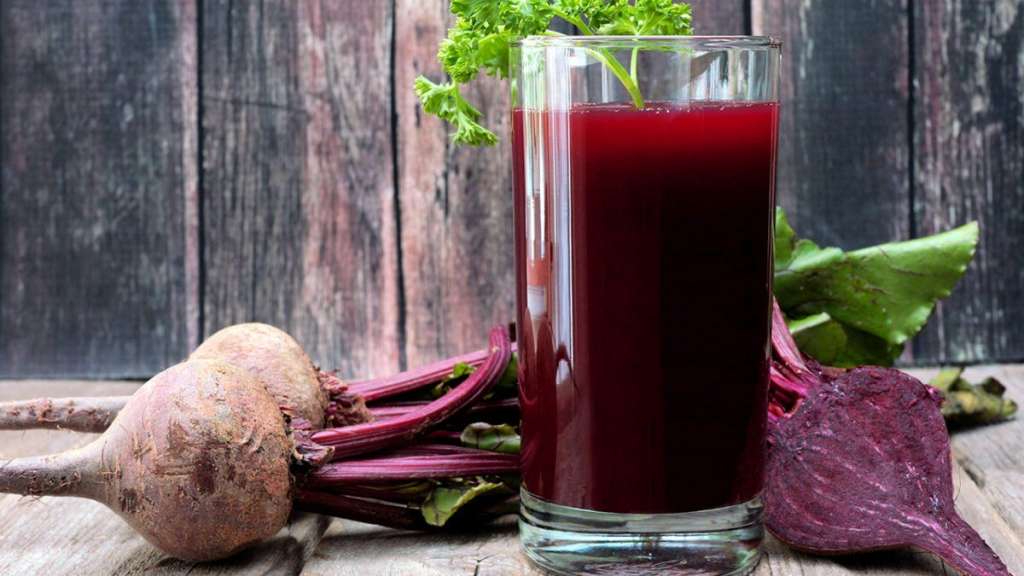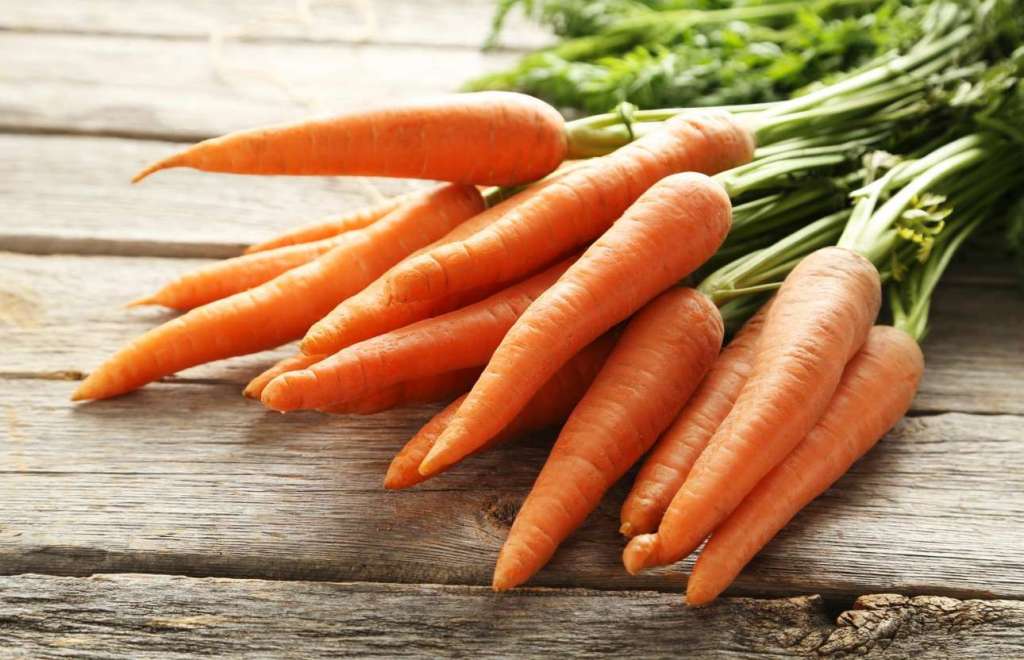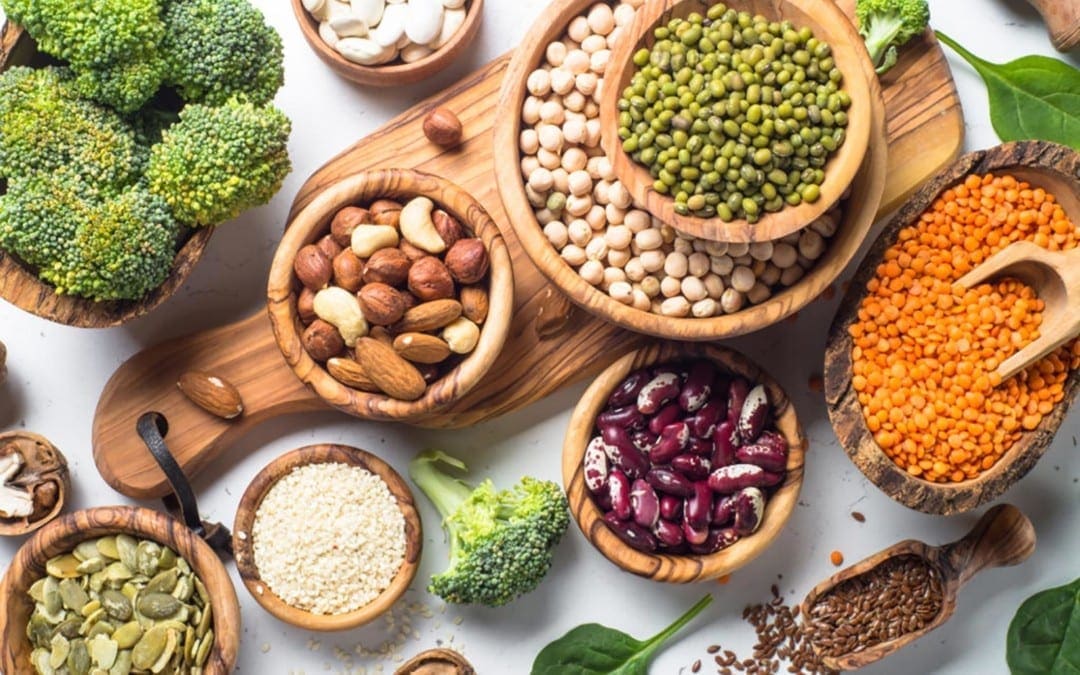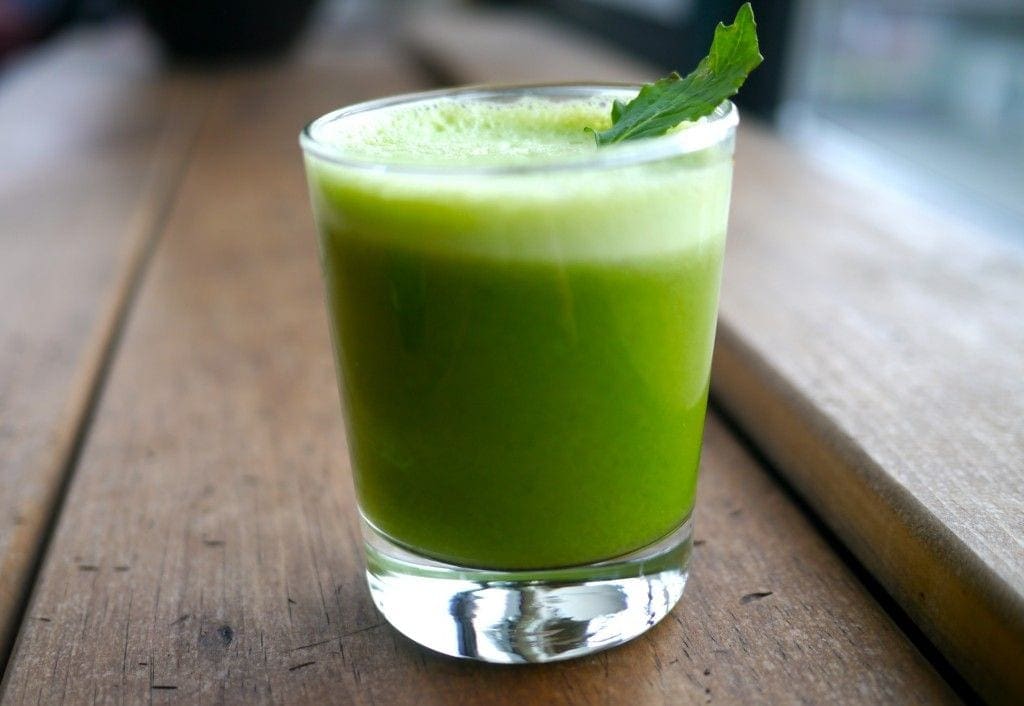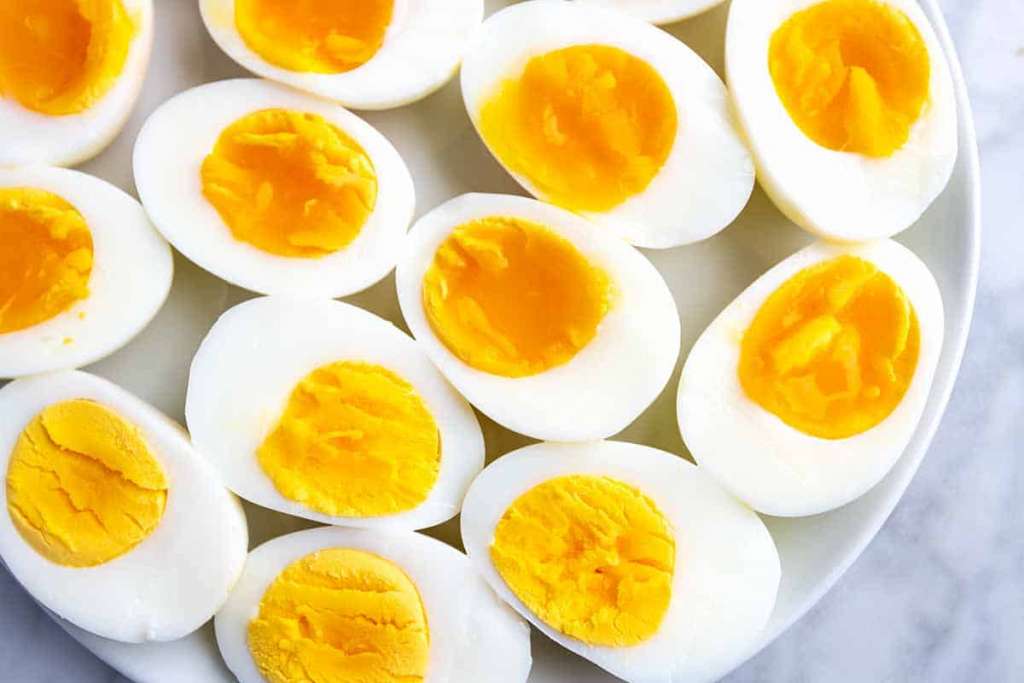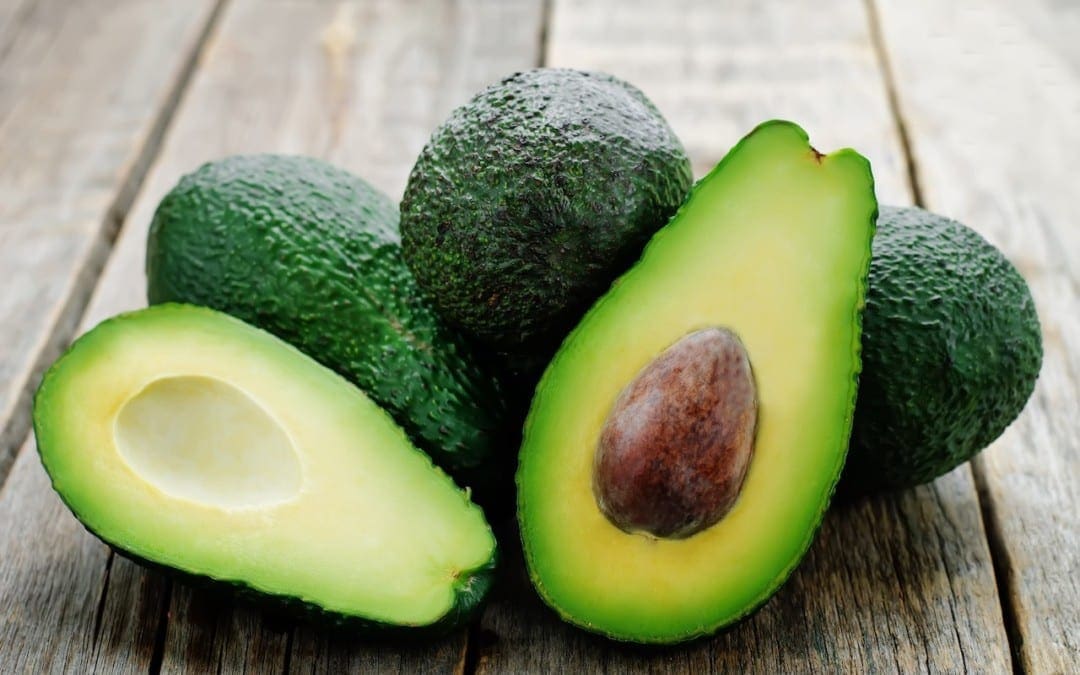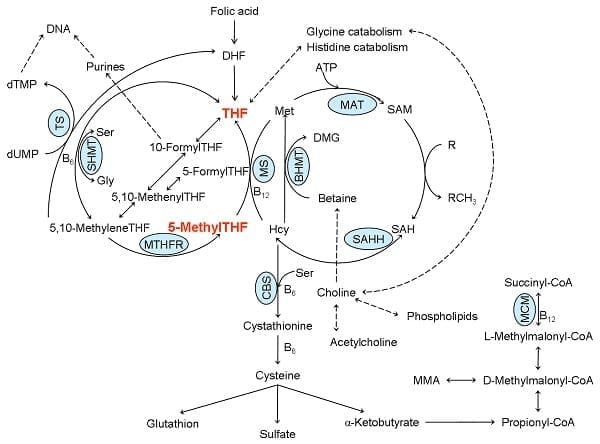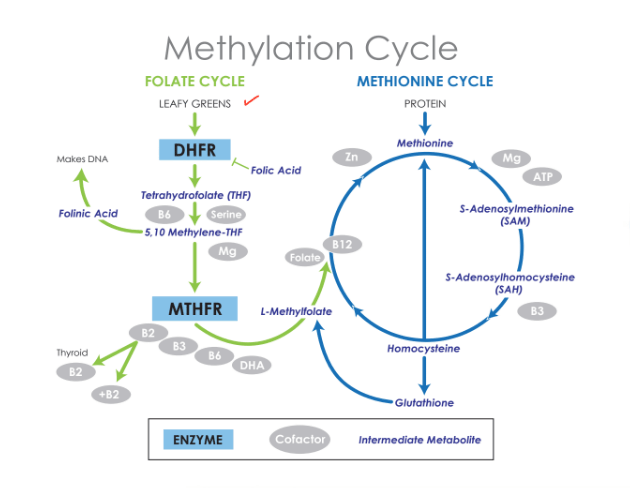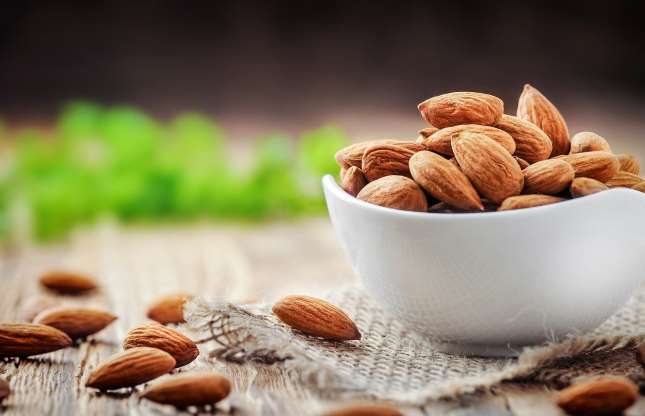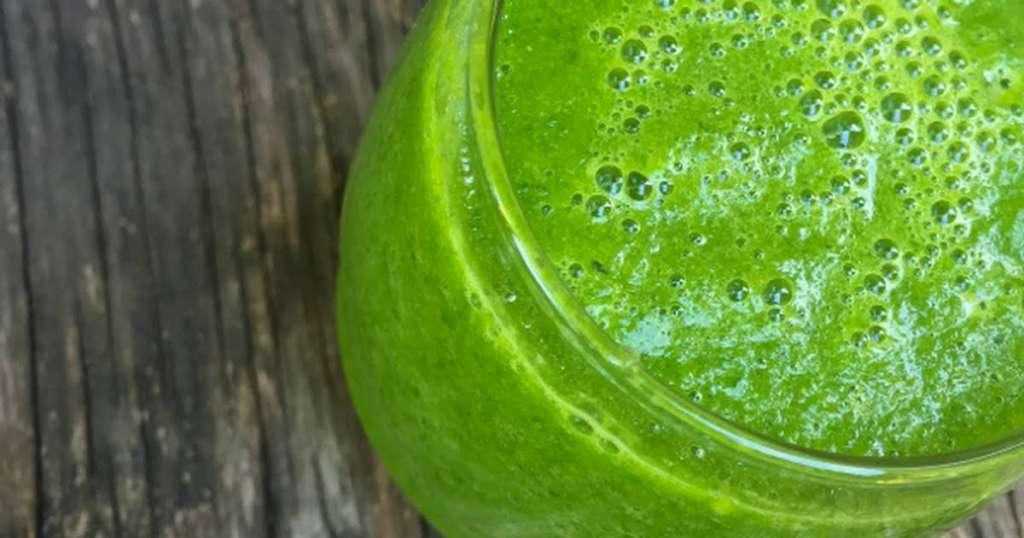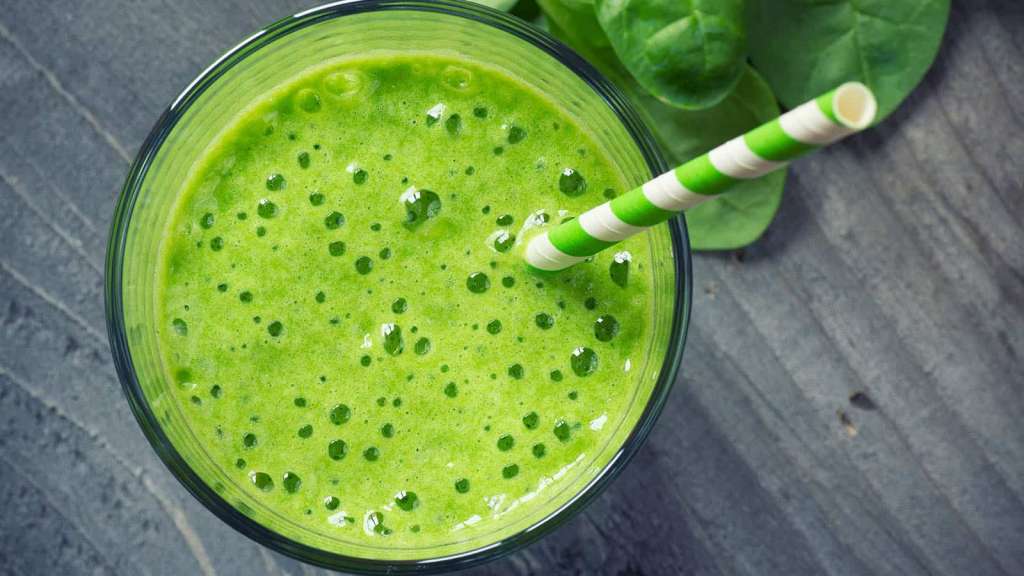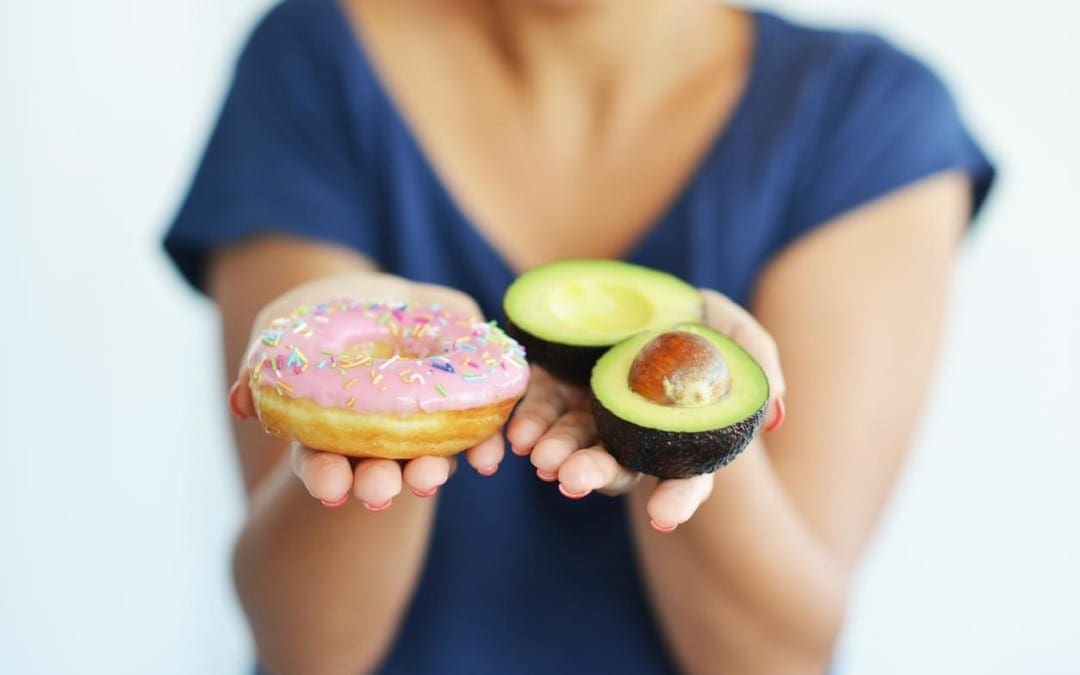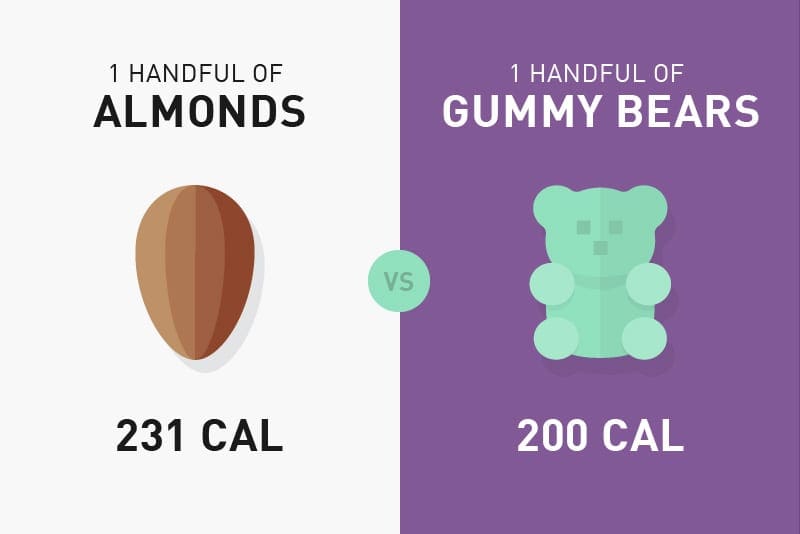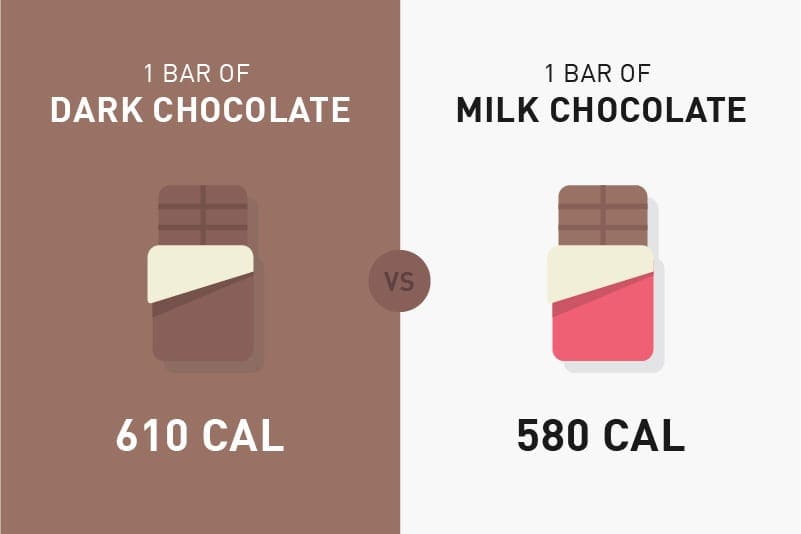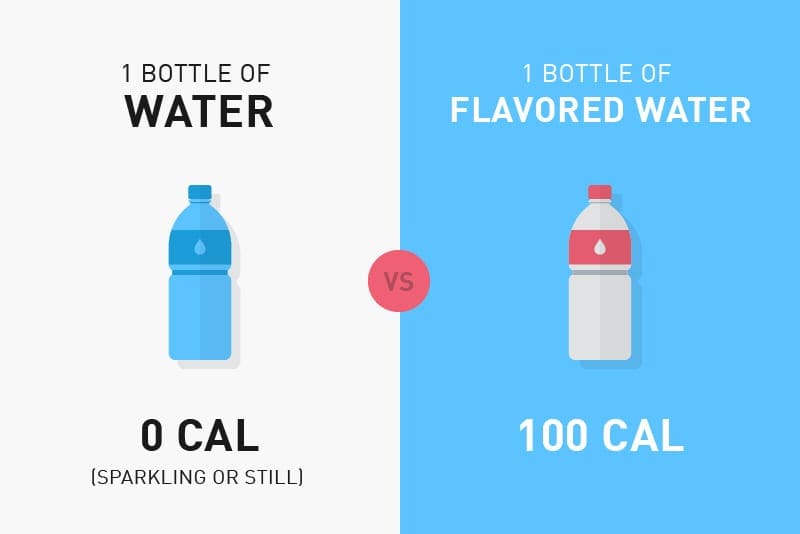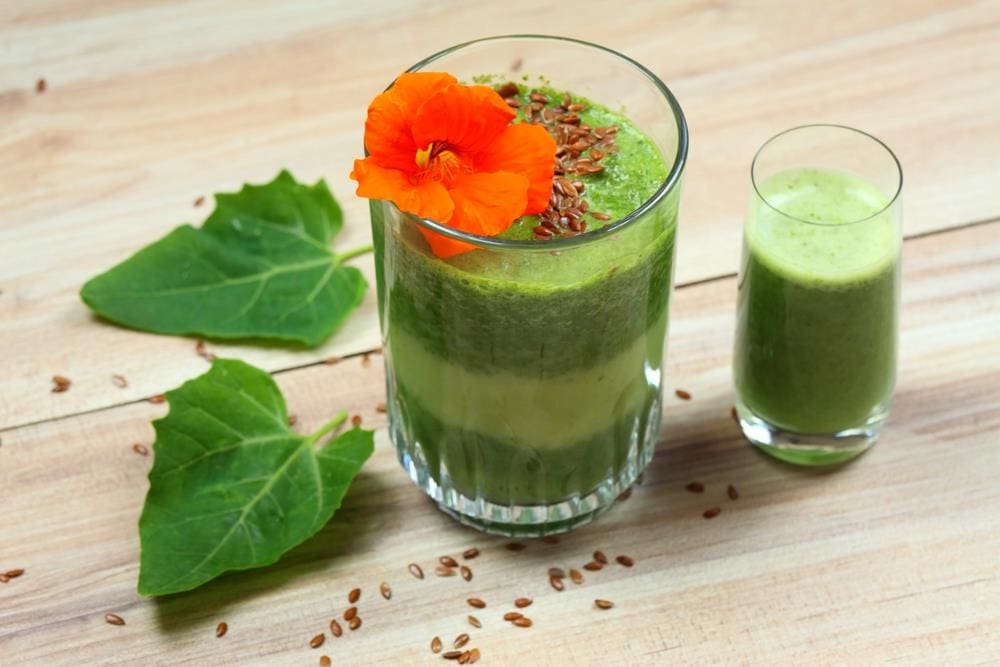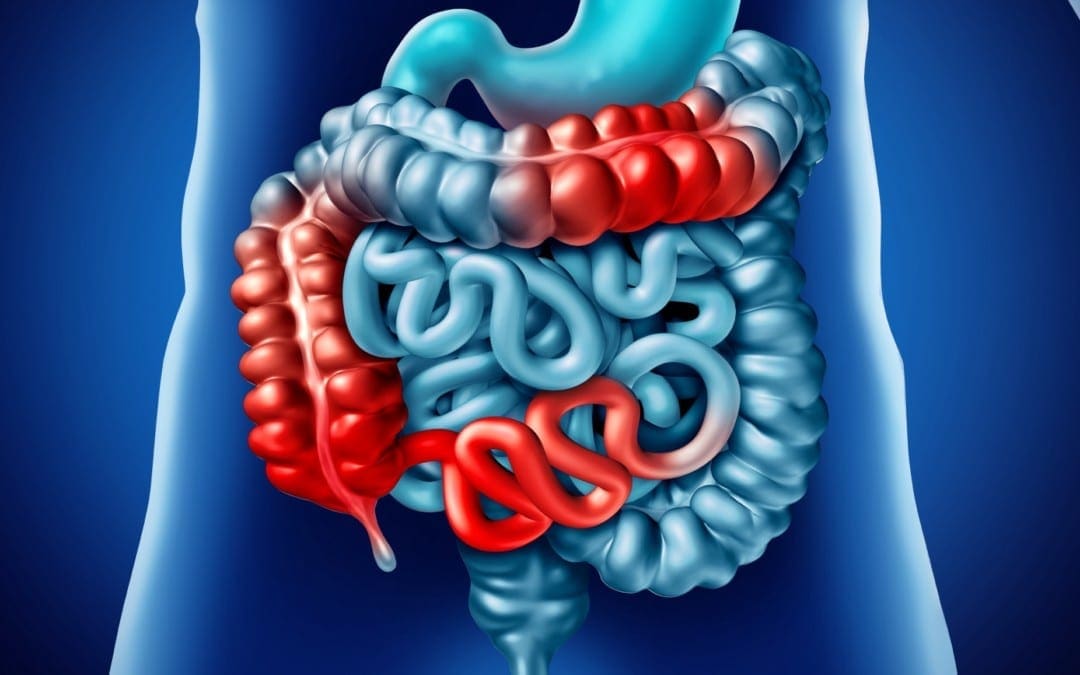
What is Crohn’s Disease? An Overview
Crohn�s disease is an inflammatory bowel disease (IBD). IBDs are health issues that affect the digestive tract by causing inflammation that lasts longer than an average upset stomach or mild infection. Most people think that the digestive tract only consists of the stomach, which stores and breaks down food, as well as the small and large intestines, which take the waste out of our systems through urine and feces. But it�s more than just that. The mouth and esophagus are also part of the digestive tract and problems within can make things difficult and painful down the line. While researchers have been researching Crohn�s disease for several decades, they have no undisputed answer on the cause of this disease. This article will take you on a journey through the history, causes, symptoms, diagnosis, and treatment of Crohn�s disease as well as what the future holds. According to the Crohn�s and Colitis Foundation of America, as many as 700,000 people in the United States suffer from Crohn�s disease while 3 million total have some sort of IBD. That is equivalent to the number of people living in Washington D.C.
Understanding Crohn’s Disease
Crohn�s disease was first described by Dr. Burrill B. Crohn in 1932 with the assistance of Dr. Leon Ginzburg and Dr. Gordon D. Oppenheimer. Crohn was born in 1884 in New York City as one of 12 children. He became a doctor because of the sympathy he had for his father who suffered terrible digestion problems. Crohn was part of an enormous group of doctors who joined many reputable medical schools at the beginning of the 20th century, graduating from Columbia University�s College of Physicians and Surgeons in 1907. At the university, he earned an M.A., Ph.D., and an MD� for his research on an intra-abdominal hemorrhage. He could not pay the high cost ($35) for the former two degrees because he did not want to ask his father for the money. He spent 2.5 years as an intern at the illustrious Mount Sinai Hospital, one of only 8 interns selected from 120 candidates. He found humor in his chosen profession which he quoted in his biography saying, �It has been my misfortune (or perhaps my fortune) to spend most of my professional life as a student of constipation and diarrhea. Sometimes I could wish to have chosen the ear, nose, and throat as a specialty rather than the tail end of the human anatomy.�
Most gastroenterologists of the time were surgeons, but Crohn�s research was such that he joined the American Gastroenterological Association in 1917, having been mentored by Dr. William J. Mayo whose clinic remains one of the foremost bodies of American medical knowledge more than 100 years later. Although he was married with two children, Crohn was consumed with his work and his patients, with daily and nightly house calls. Perhaps even more important was his work on �Affections of the Stomach� which he published in 1928. He worked with Dr. Jesse Shaprio at Mount Sinai who suffered from IBD himself. Crohn found that many Jews had the condition and, since Mount Sinai admitted many of them, he found plenty of patients to study. He ended up as the first head of Mount Sinai�s Gastroenterology Clinic and was associated with the hospital for 60 years. He joined the efforts of surgeon Dr. A. A. Berg along with Ginzburg and Oppenheimer to start a project dedicated to bowel tumors and strictures. Their combined research allowed Crohn to present a paper to the American Gastroenterological Association in May 1932 in Atlantic City called �Non-specific Granuloma of the Intestine� followed by a second called �Terminal Ileitis: A new clinical entity�. Crohn preferred the term regional ileitis because he believed it only existed in the distal part of the small intestine and was worried people would assume it was fatal when they saw the word �terminal�. Soon after, the term Crohn�s disease became the catch-all for any terminal or regional enteritis. Crohn did not want the �honor� but his colleagues insisted.
The history of the disease is recorded as far back as 850 AD, affecting England�s King Alfred. The populace believed that he was being punished for his sins, but the presence of fistulas and pain from eating speaks otherwise. About 150 years before Crohn�s disease got its name, an Italian physician named Giovanni Battista Morgagni described the disease in 1761. Crohn officially retired in 1948 but continued practicing medicine well into his mid-90s. He passed away on July 29, 1983, 11 months short of his 100th birthday. In his final year, his friends, family, and colleagues began the creation of the Burrill B. Crohn Research Foundation at Mount Sinai Hospital.
What Causes Crohn’s Disease?
Crohn�s disease has troubled doctors and researchers for decades because an exact cause can’t be found, which limits their ability to fully treat it. Poor diet habits together with high levels of stress were the original leading cause for the health issue, but over the years those have come to be thought of as factors that aggravate the condition, not cause it. Two factors that stand out in today�s research are heredity and a malfunctioning immune system.� Like many major diseases, if someone in your family has suffered from Crohn�s disease, there is a much higher chance that you will too. Anytime you go to a new doctor, this should be one of the first things you inform them of when filling out a family history chart. That way if any of these symptoms do manifest, your doctor will have a knowledge base from which to proceed. Despite believing that genetics plays a fundamental part, currently, doctors can’t predict who will get Crohn�s disease based on family history.
Another leading theory is that an invalid response by the body�s immune system can cause Crohn�s disease to develop. The theory suggests that some bacteria or viruses can trigger Crohn�s disease by causing an abnormal immune system response when the body is fighting it off. The response causes the immune system to attack its own cells in the digestive tract, leading to the inflammation. Crohn�s disease attacks people of all ages, genders, and ethnicities, however, these characteristics are thought of as leading to a greater chance of getting the condition.
- Geography:�People who live in urban/industrialized areas are more likely to develop Crohn�s disease than those living in rural areas. This suggests that diets full of refined foods or heavy in fat are more likely to trigger Crohn�s disease, while people eating diets that are more fresh and free from additional chemicals are more likely to avoid it.
- Family History:�Although plenty of people get Crohn�s disease without a single relative suffering the same, as many as 1 in 5 people with Crohn�s disease (20%) have a relative who also has it.� Between 1.5% and 28% of people with IBD have a first-degree relative (parent, sibling, child) that have an IDB as well.
- Smoking:�Like many other diseases, smoking augments the severity of Crohn�s disease and is the single most controllable risk for developing it. No one can make you stop smoking, but if you are experiencing the initial signs of Crohn�s disease, it is the best thing you can do for yourself.
- Ethnicity: One of the most frustrating parts of Crohn�s disease is the randomness it seems to possess in who it strikes. Caucasians are the highest risk group, particularly those of Eastern European Jewish descent. However, African-Americans and people of African descent that live in the United Kingdom have seen their numbers consistently rise over the past decades when it comes to developing Crohn�s disease.
- Age:�Another rarity. Anyone at any age can Crohn�s disease, but it is usually diagnosed before the age of 30, suggesting it is tied to growth and maturity. It is among the rare diseases where your chance of developing it lessens as you get older.
- Ingesting anti-inflammatory medications: Nonsteroidal medicines that include ibuprofen, naproxen sodium, diclofenac, etc., can lead to inflammation of the bowels, which worsens Crohn�s disease. If you have the symptoms of Crohn�s disease, do your best to avoid the likes of Aleve, Advil, Voltaren, Motrin IB, etc.
What are the Symptoms of Crohn’s Disease?
As Crohn�s disease begins to take hold of a person�s body, they will experience abdominal pain, fatigue, weight loss, malnutrition, and severe diarrhea. It does not follow a set pattern as Crohn�s disease can affect different parts of the digestive tract for different people. While there are many similarities, it is rare for two cases to be exactly alike. Crohn�s disease causes inflammation in the digestive tract that spreads deeper and deeper in the bowel tissue of the affected areas. Normal medicines can lessen the intensity of the pain, but the infection runs too deep for them to be able to do much more. These symptoms can be extremely painful, embarrassing for those who suffer from fatigue or severe diarrhea, and debilitating, making the sufferer miss days, weeks, or even months of work or school while seeking treatment and learning how to cope. The most commonly affected parts of the body for someone suffering from Crohn�s disease are the small intestine and the colon. The biggest problem with diagnosing Crohn�s disease early on and starting treatment for it is that many of its symptoms are similar to a host of other maladies, including:
- Cases of diarrhea
- Fever
- Abdominal pain/cramping
- Appearance of blood in the stool
- Fatigue
- Loss of appetite
- Unexplained weight loss
- Mouth sores
- Fistulas around the anus causing pain or drainage
In most cases, the appearance of one or even a few of these symptoms could be attributed to any number of infections or viruses. A good doctor will rule out those first, often with a simple medication plan. If progress is not made, then the potential of Crohn�s disease heightens. The surefire symptoms that demand a trip to the doctor include: blood in your stool, multiple episodes of diarrhea that don�t stop with the application of over-the-counter medications; a fever that lasts more than two days without an explanation; losing weight without meaning to or without a proper explanation (food poisoning, a stomach bug, etc.) Loss of appetite, undereating, and fatigue are all signs of malnutrition. When your body isn�t getting the right nutrients from the food you eat, it is difficult for it to fight off illnesses and infections. Left untreated, the symptoms of Crohn�s disease become extremely serious, including:
- Inflammation of the liver and/or bile ducts
- Inflammation of joints
- Inflammation of eyes
- Inflammation of skin
- In children, delayed growth and/or sexual development
What is the Diagnosis of Crohn’s Disease?
When one or more of the symptoms persist and your physician has ruled out more pedestrian causes, attention must focus on the possibility of Crohn�s disease as the cause. Different symptoms can mean different types of Crohn�s or even a different type of IBD. Types of Crohn�s disease include:
- Ileocolitis:�This is the most common form of Crohn�s disease. It affects both intestines � the end of the small intestine, which is also known as the terminal ileum. Common symptoms include diarrhea, cramping, pain in the middle and lower-right abdomen, and significant weight loss.
- Ileitis:�This type of Crohn�s disease only affects the ileum. Its symptoms are generally the same as ileocolitis. In severe cases, fistulas and inflammatory abscesses can appear in the lower right part of the abdomen.
- Gastroduodenal Crohn�s Disease:�Affects the stomach and the beginning of the small intestine which is known as the duodenum. Symptoms can include weight loss, loss of appetite, frequent vomiting, frequent fits of nausea.
- Jejunoileitis:�This type of Crohn�s disease affects the jejunum, which is the upper half of the small intestine. Patchy areas of inflammation in the upper half of the jejunum are typical of this type of Crohn�s disease. Symptoms are not as severe in this form, but no less important to have diagnosed. They include mild-to-intensive pain or cramps following meals in your stomach or abdomen; bouts of diarrhea; fistulas forming long term in severe cases or if the inflammation goes a long time without being treated.
- Crohn�s Granulomatous Colitis: This type affects only the colon. Typical symptoms are diarrhea, rectal bleeding, conditions around the anus that include ulcers, fistulas, and abscess, and joint pain, or skin lesions.
No single test confirms a diagnosis of Crohn�s disease. Other conditions have the same symptoms, including bacterial infections, so it might take some time to actually get the diagnosis despite days, weeks, or months of the symptoms.
What Can You Expect From Your Doctor?
The first thing a doctor will do is to do a standard physical exam of your entire body including questions on your family history, daily routine as well as diet and nutrition. Answering all of these completely and honestly will allow your physician to rule out or narrow in on certain maladies a lot quicker. Diagnostic tests will come in the form of blood draws and stool samples. These can eliminate the presence of a lot of diseases and focus in on what might be the case. If those are inconclusive, most doctors will likely perform X-rays on your upper and lower GI tract, looking for things like inflammation and ulcers. A contrast test might also be ordered to see the clear difference between what should be there and what should not. Remember to bring a friend or family member with you to these appointments, as it can be overwhelming to go through all the possibilities and potential diagnosis of Crohn�s disease. As the tests progress, it is a good idea to contact your insurance company and let them know what is going on so they can give you information on what tests are covered and which might not be. Make sure to write down as much information as you can with your doctor and ask questions that you don�t understand.
If the initial X-rays are not successful in narrowing down the issue, your doctor might recommend an endoscopy. This is a procedure done by putting a tiny camera mounted with a light to look at your GI tract and intestines. They are much more invasive than chest X-rays, but many technological advancements have made it much more tolerable. A GI doctor can use a bit of local anesthesia and a small camera to deaden your throat and disable your gag reflex. This allows the GI to view your mouth, esophagus, stomach, and the first part of your small intestine, known as the duodenum, looking for tell-tale signs of inflammation or ulcers.
A second endoscopy is a bit more of a chore. Also known as a colonoscopy, it requires the total evacuation of your GI tract before doctors can take a look. This means you�ll take medicine to clear it out, which will induce quite a few trips to the bathroom and be none too pleasant. This procedure usually requires drinking a liquid that acts as a fairly extreme form of laxative and will require you to take time off from work or school for at least a day while its effects take place. Once you get to the medical facility, you will be given anesthesia to knock you out, which is a good thing as the camera will enter through your rectum and move up to look at your colon. If there are any unusual structures present in either endoscopy, doctors might want to collect a biopsy of your colon or another area. This is done by using a tool to remove a small bit of tissue from inside the intestine or inside some other part of your GI tract for analysis. There is zero pain associated with a biopsy.
During the colonoscopy, the doctor might want to do another procedure known as a chromoendoscopy. In this procedure, a blue liquid is sprayed into the colon. It reveals slight changes in the lining of your intestine which can be polyps or other changes that are believed to be precancerous. This means they might be precursors to changes to your body that can become cancer cells. If polyps are discovered, they can be removed and a biopsy is taken to determine if they are benign or malignant. If the blue liquid is used, bowel movements will have a definitive blue tinge to them for the next few days.
There are some parts of your small intestine that cannot be seen during either colonoscopy or endoscopy. This requires small intestine imaging which works using an oral contrast � something you drink � in conjunction with computer tomography (CT) scan or a magnetic resonance imaging scan (MRI). As radical as it sounds, this can involve swallowing a camera that size and shape of a bill which then takes pictures of your small intestine and bowel as it moves through your GI tract. It is harmlessly expelled during a future bowel movement. If parts of the intestine are too hard to reach, a balloon endoscopy can be used. It�s not a real balloon, but the concept is the same. The displacement of the structure with an air-filled object creates space for the camera to get in close and record.
What is Crohn�s Disease Activity Index (CDAI)?
The Crohn�s Disease Activity Index (CDAI) is a research tool that allows researchers, doctors, and patients to quantify how painful symptoms of Crohn�s disease are at any given time. It was first developed by W.R. Best and his colleagues at Illinois�s Midwest Regional Health Center in 1976. The index has eight factors that it considers, each weighted and then added together to reveal a final score. The CDAI helps major studies diagnose how well the medicine is effective for people suffering from Crohn�s disease. It is excellent for determining the quality of life for Crohn�s disease sufferers to give doctors a good grasp on how much pain a person can endure before their quality of life really begins to suffer. The eight variables involved in the CDAI are:
- Percentage deviation from standard weight
- Hematocrit of <0.47 (men) and 0.42 (women)
- Presence of abdominal mass (0 if none, 2 if questionable, 5 if definite)
- Is the patient taking Lomotil or opiates to reduce bouts of diarrhea?
- How is the patient feeling in general on a scale from 0 (well) to 4 (terrible). This is accounted for every day for seven days straight.
- Presence of complications
- Abdominal pain graded from 0 (none) to 3 (severe) for seven days straight.
- A recording of the number of liquid or soft stools for seven straight days.
These eight factors are all assigned different weights, with the presence of complications and taking of Lomotil or opiates getting the highest weights (x30 and x20). Points are also added for things like joint pain, inflammation of the irus, anal fistulas, and fissures, a fever, etc. When all of this information is tallied a number, usually three digits are presented. If a person has a score of more than 450, they are considered to have severe Crohn�s disease and actions are taken accordingly. If the CDAI is less than 150, a person is considered to be in remission. If a person�s CDAI score drops 70 or more points be responding to treatment. A working version of the CDAI scale can be found here. Although it is very helpful, the CDAI has also been met with some criticism. The fact that it does not consider the typical quality of life, fatigue, endoscopic factors, protein loss, or other systemic features.
What are the Complications of Crohn’s Disease?
Similar to many other severe diseases, the lack of treatment of Crohn�s disease or the worsening of it despite treatment can lead to several other complicated illnesses, some of them life-threatening. They include:
- Bowel obstruction: When Crohn�s disease inflames the digestive tract it can thicken the intestinal wall, which causes parts of the bowel to develop scar tissue and begin to narrow, making for irregular bowel movements. If the passage becomes too narrow it will actually block the flow of your digestive system, causing its contents to become stuck and form a barrier of their own. This will start as constipation but will eventually become obvious that something more severe is going on as treatments are applied. Surgery, usually done quickly after the diagnosis is made, will be required to remove the part of your bowel that has become scarred. If the bowel obstruction is complete, it requires emergency surgery. This sort of surgery is done under general anesthesia, meaning you are asleep for the procedure and will not feel any pain as it is performed. A surgeon makes a cut into the belly to see the intestines. Sometimes this is done laparoscopically to minimize how much cutting has to be done. From there, the surgeon will find the part of your intestines that is blocked and unblock it. This is not the extent of the procedure, however. If any part of the bowel is damaged, it must either be removed or replaced. This is known as bowel resection. If it is removed, the healthy �ends� on either side of the removed section are connected together, using either staples or stitches, which can either dissolve or be removed with another procedure, this one much more likely to involve laparoscopy. There are some incidences where the ends cannot be connected because such a large part of the intestine has to be removed. When this happens, the surgeon brings out one end through an opening in the abdominal wall via a colostomy or ileostomy. The key is to perform the surgery before blood flow in the bowel is affected. The surgery has many risks including more scar tissue forming, damage to nearby organs, and more bowel obstructions.
- Ulcers:�When parts of the body are chronically inflamed, they lead to open sores that do not heal like normal. These are called ulcers and can be found almost anywhere in your body, inside or out. For people suffering from Crohn�s disease, they can be found in the mouth, the anus, the stomach, or in the genital area. Ulcers along the GI tract are often the first sign of the disease, although since they are undetectable except in the mouth, for most people, they are often missed until other symptoms form. Ulcers can also form in your duodenum, appendix, small intestine, and colon. A similar condition, known as ulcerative colitis, only forms in the colon and is not as serious as Crohn�s disease. If an ulcer breaks through the intestinal wall it can form a fistula, a connection between the intestine and the skin or different parts of the intestine. This is a very dangerous condition that may lead to food bypassing your bowels or even bowels draining onto your skin. If they develop into abscesses they can be life-threatening. Ulcers can also cause a person to become anemic if there is more than one of them in the small intestine or the colon. This can cause frequent loss of blood and can require surgery.
- Anal Fissure: This is a small tear in the tissue of your anus or the skin around it that can become infected. It results in painful bowel movements. It can heal naturally, but left untreated threatens to come to a perianal fistula.
- Malnutrition: Anyone suffering from diarrhea, abdominal pain, and cramping is likely to not be getting enough nutrients into their body for proper function. Common results are anemia from not intaking enough iron or enough B-12. If the small intestine is inflamed, it can cause problems with digesting food and absorbing nutrients. If the problem is in the large intestine, including the rectum and the colon, the problems include the body�s inability to absorb water and electrolytes. What causes malnutrition? There are several ways that it can form. One that most people have experienced over the course of their lifetimes is severe diarrhea. Have you ever had food poisoning that resulted in multiple incidents of bad diarrhea or vomiting? The next time you step on a scale you might be astonished to see that you have lost several pounds in a single day, maybe even as many as 10 or 12! When your body detects something in your GI tract, it makes every effort to evacuate it one way or another. This results in the body using fluids to transport the foreign elements out of the system and can lead to dehydration as fluids, nutrients, and electrolytes such as zinc, phosphorus, magnesium, potassium, and sodium get ejected along with it. � Other causes of malnutrition include abdominal pain and nausea. If you�re a woman who has ever been pregnant and dealt with morning sickness, you know how these feel, and when they strike, eating is the last thing on your mind. However, it also makes it tough for your body to gather sufficient nutrients and the correct number of calories, which makes it weaken over time. Rectal bleeding, both painful and embarrassing, also causes malnutrition because the ulcers in your intestines are leading to deficiencies. Frequent trips to the bathroom can also cause malnutrition because people will seek to cut down on this habit by eating less to avoid embarrassment. But cutting back on your body�s calorie intake can lead to malnutrition and weight loss. An even tougher pill to swallow is that certain IDB medicine damages your ability to say nourished. Prednisone, which is a common corticosteroid, can cause a decrease in healthy muscle mass over long-term use. Other treatments, like sulfasalazine and methotrexate, can interfere with the absorption of folic acid, which is crucial in healthy cell growth.
- Colon cancer:�The �Big C� rears its ugly head in association with Crohn�s disease, unfortunately. Having Crohn�s disease increases your risk of colon cancer. People without a family history of Crohn�s disease or colon cancer are advised to get a colonoscopy every 10 years beginning at age 50 to check. If you have a family history, ask a doctor about having it done sooner and more frequently. Colon cancer starts in the colon or rectum when cells grow abnormally. Most starts as a growth called a polyp on the inner lining of the colon or rectum. There are two types of polyps: Adenomatous and Hyperplastic/Inflammatory. The latter are generally not cancerous and are more common. The former sometimes change into cancer. If they are larger than 1 cm, this is more often the case, or if more than two are found. A condition called dysplasia also is a warning sign of cancer. This means that after the polyp is removed, there are areas in the polyp or in the lining that don�t look normal, suggesting they are cancerous in origin.
- Other health problems:�Any number of maladies can befall someone stricken by Crohn�s disease. How it affects the rest of the body is different from person to person. Common problems can include anemia, skin disorders, arthritis, liver disease, and gallbladder disease.
- Malabsorption:�A complication of malnutrition, it makes it difficult for vital nutrients such as fats, sugars, vitamins, minerals, and proteins to make it through the small intestine. Inflammation of the intestines, a symptom of� Crohn�s disease, can also make this possible.
- Decreased Bone Strength:�A complication of malnutrition, it increases your risk of bone fractures. If your body is not getting enough Vitamin D, is not absorbing enough calcium, or you have long-term inflammation, this is more likely to happen.
- Growth Delays:�A dangerous complication for kids suffering from� Crohn�s disease is a lack of growth due to IBD. About one-third of kids with� Crohn�s disease and 1/10th of those with ulcerative colitis in the US will be shorter than expected. Children with either of these diseases should have a dietitian consulted by their parents.
What is the Treatment for Crohn’s Disease?
Hearing that there is no known cure for Crohn�s disease can be a debilitating blow to people suffering from it. However, developments in therapy allow for the ability to greatly reduce it symptoms and even invoke long-term remission in some patients. Given proper treatment and with a commitment by the sufferer, people afflicted with Crohn�s disease can function well and lead a long, healthy life. The good news is that if one treatment option does not work well, there are others to try. It�s a balancing act for most people, and the need to titrate that balance between medicine, changes to their diet and nutrition routines, and sometimes surgical procedures is the best way forward to getting on track and healthy.
- Medication: Medication is what most people think about when they get sick, and such is the case here. Medicine for Crohn�s disease is designed to suppress the response of your immune system to the inflamed parts of your GI tract. Suppressing that inflammation can go a long way to reducing the pain from fever, pain, and diarrhea. It also gives your body time to heal up. The medication can help you avoid flare-ups (see below) and extended periods of remission to great and greater lengths of time. We�ll talk about remission later in this book.
- Combination Therapy:�Combination therapy is exactly what it sounds like; using more than one source of treatment to get Crohn�s disease under control. This sort of treatment can also up the risk of side effects or even toxicity, so your doctor needs to analyze both you and the treatment plan to see what makes the most sense.
- Diet & Nutrition:�The amount of diseases that get dramatically better when one starts to make drastic changes in their diet and nutrition habits is truly astounding. Good nutrition via eating the right kinds of foods for your specific form of Crohn�s disease can really lessen the painful symptoms of the disease and prevent flare-ups. Understanding your body�s needs in terms of proteins, fats, carbohydrates, water, vitamins, and minerals can give you a great education on why you�re developing certain side effects and how to lessen their effect. Much like when you get food poisoning or an upset stomach, reverting to a bland diet � the universally known Bananas, Apple Sauce, Rice, Toast (BRAT) method is a great way to lessen the discomfort that may occur when eating spicy foods or those that cause flare-ups.
- Surgery:�No one wants to have a surgery especially in an area as sensitive as your GI tract. However, statistics say that as many as 66%-75% of people with Crohn�s disease will require surgery at some point. That number is daunting, but since most people don�t understand or can identify that they have Crohn�s disease until they have suffered inflammation of the intestines. Surgery is necessary when medications are not working or if the inflammation has turned into an obstruction, fissure, or fistula, that is not allowing your intestines or anus to work correctly. As mentioned earlier, these surgeries include removing a diseased portion of the bowel, known as resection, and taking the remaining healthy portions and moving them together (anastomosis). Although this sort of surgery can make a huge difference and send someone suffering from Crohn�s disease into remission, it is not a cure. Post-surgery statistics show that 30% of patients that have surgery related to Crohn�s disease have a return of symptoms within three years, and as many as 60% have a return of symptoms within 10 years.
How Can You Avoid and Contain Crohn’s Disease Flare-ups?
Flare-ups are an unfortunate but expected part of suffering from Crohn�s disease. Very rare are the patients who are diagnosed with Crohn�s disease, get treatment, and they are in remission for the rest of their lives. Eventually, a flare-up will come to any Crohn�s disease sufferer. Being prepared and understanding the causes is very important to keep a flare-up from becoming a longer-term suffering session. When a flare-up does happen, sufferers of Crohn�s disease must be on their guard to take care of themselves but also to identify possible causes of the flare-up. Doing so will make it much easier to avoid them in the future.
The first thing to check on when you have a flare-up is your recent diet. Lots of foods can exacerbate your GI tract and cause inflammation anywhere along the tract, from your mouth to your intestines. Foods that contain spices like garlic, chili powder, onions, paprika, and so on are among the types of food that can easily agitate the digestive tract and cause inflammation that can cause severe pain and severe diarrhea. A great way to pinpoint what foods might be causing the flare-up is to keep a food diary in which you record everything you eat. This way you can really target foods that when consumed are followed by a flare-up. It might not even be food but an actual ingredient that causes the flare-up. Knowing what foods cause these symptoms in you makes it easy to avoid them. If you are struggling to define what foods are safe for you and which ones trigger your Crohn�s disease, ask a doctor about the possibility of consulting a dietician about the matter.
If you�ve ruled food out as a probable cause of a flare-up, your next best bet is to analyze your patterns for taking medicine. Skipping a dose, taking the wrong dosage, or even taking pills at different times than normal can trigger a reaction or lessen the potency of the drug�s effectiveness at quelling your Crohn�s disease symptoms. If you are an adult or a teenager, the only person who can make you take your pills on time and in the correct dosage is you. If you are a parent of a child with Crohn�s disease, you must ensure they are taking the exact dosage at the exact time each day. If you are finding your current dose to not be taking good enough care of your symptoms, you must contact your doctor, explain what is going on, and work with them to find a solution or possibly change the medication itself, how often you take it, when you take it, or the dosage you are taking. Doctors want to help you find that healthy medium between being too drugged up and being in too much pain.
If it�s not your Crohn�s disease medication bothering you, it might be another form of medication, particularly nonsteroidal anti-inflammatory drugs (NSAIDS). Despite that tongue-twister of a name, these are some of the most well-known drugs in the world with more common names like aspirin and ibuprofen. Unfortunately for sufferers of Crohn�s disease, these analgesics also have painful side effects that can irritate the bowel and kick up inflammation quickly. If you suffer from frequent fevers, headaches, or other body pain, ask your doctor if it is safe for you to take acetaminophen (commonly found in Tylenol) to avoid the NSAIDs.
Another medicine that can cause flare-ups are antibiotics, frequently prescribed to treat bacterial infections. If you�ve ever been prescribed antibiotics, you�ll know that the doctor, the nurse, and the pharmacist will all insist you take them with food to lessen the chance of an upset stomach. This still happens in even the healthiest of people because it changes the balance of the bacteria in your intestines. That can cause diarrhea, and when diarrhea appears in the tract of someone suffering from Crohn�s disease, it can spell trouble.
If your diet is good and you are avoiding medicines that are known to cause flare-ups, there are still two more places to look among the likeliest causes. The first is if you are a smoker. Look, we all know that smoking is bad for you for any number of reasons, increasing your risk for stroke, heart attack, and lung cancer among others. That same risk holds true for patients suffering from Crohn�s disease. Introducing smoke and tobacco to your digestive system is one of the worst ideas you can have. If you are tempted to smoke while going through Crohn�s disease, be aware that you are much more likely to need surgery because of it. One other cause of flare-ups is increased stress. Stress was originally thought of as one of the causes of Crohn�s disease, but in fact, it is more commonly believed to be an agitator of the disease. If you are struggling with stress and can feel it spilling over into you Crohn�s disease, consult a doctor on how to incorporate stress-management techniques. If your need is immediate, things like taking a warm bath or a long shower can help relax your muscles. Other ideas are to exercise or simply take a walk to pull out the strain from muscles you did not even know you were clinching. You can also try yoga or meditation, for which there are thousands of online resources to get you started.
What Can You Do When You Have a Crohn’s Disease Flare-Up?
It�s hard not to feel stress and/or panic when you have a flare-up of your Crohn�s disease. Some last a day, some for a week, and some a month as it really depends on the person, the circumstances, and how well they are able to handle it. Although it has no true healing powers, a positive frame of mind that this condition is temporary and that you will improve can greatly affect the mindset of a person suffering a flare-up.
- Maintain a healthy diet:�It could very well be something you ate that is driving you into a flare-up, but that does not mean you should stop eating or try some radical purge diet. Proper nutrition is the essential foundation of dealing with Crohn�s disease on a day-in, day-out basis. If you have bouts of diarrhea that drain your body of fluid, adjust accordingly by increasing your fluid intake and eating bland foods that are much less likely to have spicy ingredients or high concentrations of fat that can lead to more inflammation.
- Stay regular with your diagnostic tests:�When you are first diagnosed with Crohn�s disease and your doctor provides you with prescriptions and treatment plans, part of that plan should be regular scheduled diagnostic tests to see how your body is faring. If you have a flare-up, call your doctor and let them know about it, as well as any guesses on your part on what could have caused it. The doctor might want to move up a diagnostic test to see what sort of side effects are occurring and why you had the flare-up, this can allow the doctor to analyze what is causing it and how to prevent it from happening again.
- Set up a support system:�No one should have to go through any disease along, particularly one like Crohn�s disease that has so many miserable side effects. No matter your age, your marital status, or what you do for a living, you�ll need a network of friends and family you can rely on for emotional and physical support when you suffer a flare-up. This will involve an initial period where you let them know what you are suffering from and give them transparency and knowledge about what Crohn�s disease is and what it does to people. While it can be very embarrassing, the more open and honest you are with the people who care about you, the easier it will be to reach out when you need help. This can be anything as simple as driving to the doctor or as serious as picking your kids up at school because you have to go to the emergency room. Other times, it�s just someone who can lend an ear and talk when you are frustrated by the flare-up in particular or what the future might bring. Make sure at least one member of your support network works or lives close-by in case of an emergency.
- Maintain a great relationship with your doctor: We all get how busy most people are. You find a doctor, get your prescriptions filled, and see them again in 6-12 months. That�s not how things work when you�re battling against Crohn�s disease. Having a doctor you know, trust, and feel confident about in his or her ability to accurately and honestly get you on the right path from the get-go. This extends past your primary care physician as well. Getting on good terms with his or her office staff front desk, nurses, any other physicians, such as a dietician or a counselor can have enormous benefits down the line.
- Respect your prescribed treatment: Too many people get into their heads that they know the best overtime on how their treatment should go. These are the types that end up altering their dosage, not taking medicine at the right time, or not taking it altogether. Doctors aren�t just diagnosing you to hear themselves think. They are using all the tools at their disposal to make you feel better and let your body heal. Consider that the next time you don�t feel like taking a pill.
- Try Corticosteroids:�This medication is often prescribed to treat flare-ups for the short term. They are not recommended over a long period of time as patients can either get addicted to them or become resistant to them.
- Get better sleep:� Research has shown that patients with Crohn�s disease are more likely to have relapses if they do not get enough sleep at night. The poor sleeping in a study of 3,173 adult patients with IBD found that many 60% of patients suffering from flare-ups reported poor sleep, linking it to the likes of depression, tobacco use, and use of corticosteroids.
What is Remission Like with Crohn’s Disease?
Remission is the stage of Crohn�s disease where the symptoms go dormant. The inflammation which infects your digestive tract goes away and the damage to your bowel, colon, and other parts of the GI tract ceases. Your immune system stops attacking your own body and returns to its normal functioning. During this time, you will notice fatigue and pain diminishing and you will cease having bouts of severe diarrhea. Diagnostic blood tests by your doctor will likely show your inflammation levels have returned to normal and lesions found in your bowel, colon, stomach, anus, esophagus, and mouth will close and start to heal. No one can say what causes remission or how long it lasts, but it clearly is a cycle. After the first flare that triggers the diagnosis of Crohn�s disease, about 10%-20% of patients report long-term remission. This statistic is on the uptrend thanks to advance studies and research that better prepare doctors and patients to deal with Crohn�s disease more rapidly and effectively. There are several types of remission associated with Crohn�s disease, with accompanying characteristics. They are:
- Clinical remission: This means you have zero symptoms associated with Crohn�s disease at the time. This can happen naturally or it can be the result of the diligent taking of medicine. Note that if your remission is a result of taking corticosteroids, it�s not really considered remission, mostly because these drugs are meant only for short-term use as they can become addictive or the body can become resistant to them.
- Endoscopic remission:�This means your doctor does not find any sign of disease when he checks your colon during an endoscopy. If there is no inflammation and no lesions or polyps are present. This can also be termed as deep healing or mucosal healing. It does not really guarantee remission however, as there is a lot more to Crohn�s disease than simply what is going on in the colon. Inflammation can occur anywhere on the GI tract, but the colon is a major part of this.. Nevertheless, the colon is a major player in the disease and is one of the most painful parts of the process, so a clean bill of health there is worth celebrating.
- Histologic remission: This term refers to the condition where cells are removed from your colon during endoscopy and tested as normal under a microscope. This indicates there is no presence of cancer nor inflammation commonly associated with Crohn�s disease. This remission is discovered when a follow-up to a surgical procedure is done and a lack of disease activity is found, especially is the procedure involved an ileocolonic resection, which is the most common surgery associated with Crohn�s disease. In this procedure, the area where the small and large intestines meet each other, known as the terminal ileum, is removed.
- Biochemical remission:�Blood and excrement do not contain substances that signal the presence of inflammation. This is proven by blood tests and stool samples.
The path to remission is different for every Crohn�s disease patient, which can make it all the more vexing when you have a much harder time than someone else in achieving it. Doctors will try lots of different medications to get you going, while others will try more aggressive routes. Here are some of the routes that your doctor might take in his or her pursuit of remission for you.
Medications
Medicine is the obvious first choice for any sufferer of Crohn�s disease. Drugs have been tested for years before gaining approval from the Federal Drug Association (FDA) and most side effects are known. Since there is no real known cause for Crohn�s disease, patients are more than likely to be put on more than one drug at a time in order to titrate a cocktail that works for you. The goals in taking medications for Crohn�s disease include reducing chronic symptoms like pain and diarrhea, helping intestines heal from the damage that the inflammation has caused, and ease the inflammation itself. The following drugs are all used to fight Crohn�s disease:
Steroids
- Prednisone:�Also used to treat arthritis, blood disorders, severe allergies, breathing problems, eye problems, and cancer, it is the most well-known corticosteroids. It decreases the immune system�s response time. Is addictive, and the body can also start to resist its effects if taken for too long.
Drugs to Slow Down Your Immune System
Vigilant immune systems are a big cause of Crohn�s disease, although no one has been able to figure out why. Slowing the reaction and response time of the immune system can limit the inflammation damage it does on your GI tract. These drugs include:
- Azathioprine: Commonly used to prevent organ rejection in people that have had a kidney transplant. Also used to treat rheumatoid arthritis. It�s an immunosuppressant that weakens the immune system. It can be taken by injection or by mouth.
- Cyclosporine:�Used to prevent organ rejection for people who have had a liver, kidney, or heart transplant. Is taken orally once per day.
- Mercaptopurine:�This drug is a cancer medication that interferes with the growth of cancer cells, slowing their growth and spread across the body. It is largely used to take on leukemia. It has rough side effects that are fairly similar to Crohn�s disease, including nausea, diarrhea, and loss of appetite, as well as temporary hair loss, mouth sores or pain, and symptoms of liver disease.
- Methotrexate:�It is classified as an antimetabolite that works by slowing or stopping the growth of cancer cells and suppressing the immune system. It is often used to stop juvenile rheumatoid arthritis and comes in tablet form. It is a strong medication that requires lots of water consumption to get it out of the kidneys.
TNF Inhibitors
TNF Inhibitors are drugs that help stop inflammation. In addition to Crohn�s disease, they are useful for fighting rheumatoid arthritis, juvenile arthritis, psoriatic arthritis, plaque psoriasis, and ulcerative colitis. The three most frequently used with Crohn�s disease are:
- Adalimumab:�Used to reduce pain and spelling in arthritis, it also is used in certain skin conditions. It works by blocking a protein found in the immune system that causes joint swelling and red, scaly patches.
- Certolizumab:�Also used to kill tumors, it can defeat a certain type of spine condition in addition to treating Crohn�s to a degree and battling arthritis.
- Infliximab:�A champion for chronic plaque psoriasis, it also treats Crohn�s disease and arthritis. It works by blocking the tumor necrosis factor-alpha in the body. It also decreases swelling while weakening the immune system.
Doctors typically start with mild drugs and then move into more strong ones to try and get you into remission. If your Crohn�s disease is atypically severe when you are first diagnosed, the opposite might be true and treatment will start with stronger drugs, drifting toward milder ones once you are in remission.
Surgery
If drugs or steroids aren�t working for you, or if your Crohn�s disease is particularly severe by the time it is first diagnosed, doctors might skip the drug regiment altogether and head straight for surgery. Up to 50% of all people diagnosed with Crohn�s disease will need surgery at some time in their life. The most common surgery will see a doctor remove parts of your intestine where there is too much damage for it to function properly. They then use staples or stitches to reconnect the healthy areas. After this kind of procedure, you will be out of commission for a while, and it might take several months before you feel completely normal again.
After the surgery, you will be fed through a feeding tube with liquid food or even have it injected into your veins to give your bowel the chance to both heal and rest. Once the intestines are determined to be rested and ready to return to active duty, you will be encouraged to eat a low-fiber diet in order to make your body conducive to smaller stools that reduce the risk of bowel blockage. Within a month to four months, you should start seeing the real results of such a procedure.
Understanding Crohn�s Disease in Children
Parents fear any type of health issue for their children, but being diagnosed with a problem, particularly one with no known cure can open up a lot of feelings of panic for both children and their parents. Since most people diagnosed with Crohn�s disease are 30 years old or younger, it stands to reason that it affects many children. And because it can cause malnutrition and other problems that affect growth and development, learning about Crohn�s disease can’t be understated for parents. The best way to talk to your child about having Crohn�s disease is to tell them in a language they can understand that involves the whole family, their doctors, their school, etc. Having a prepared, informed child will make what is to come much easier on them and reduce a lot of their fears of the unknown. If your child is a teenager and more responsible for the food they eat, guiding them in diet and nutrition is a big deal. Honesty is always the best answer for older children on how to manage Crohn�s disease. This is not a temporary condition that has an attainable cure right now. Helping them understand that controlling it will be their responsibility as adults are something that must come into play as well. Clearly, younger children will need more of a hands-on approach. But don�t do everything for them. Unless they are very young, this is a great chance to teach them a gradual taking of responsibility. For younger kids, there are going to be several new events happening that will be either scary or unfamiliar that you can help them transition into. These include:
Taking Medication
For younger children, being sick usually means taking a cough syrup or something similar for a few days and then feeling better. For children with Crohn�s disease, this can elevate to taking pills, getting injections, or sitting during lengthy intravenous transfusions. Taking medication over a long period of time is a new thing for most children. Many will fear it, even something as simple as swallowing pills. Start by introducing them to the medicine � what it looks like, how to take it without chewing it, and explain what the medicine. Let them know that the medicine is the bridge between them feeling bad and having to stay home feeling sick and them feeling good and being able to get out and enjoy some of their favorite pastimes.
It�s also important to remember that children don�t have as good as memories as we do, especially when it comes to remembering what days certain things are taking place. Well into elementary school plenty of kids don�t always know the day of the week or the time of the day without consulting a grownup. That�s why a family calendar with dates marked for medications is a great way to keep everyone on the same page. Make a big deal out of each pill swallowed and appointment completed. Praise is important. When your child feels they are doing the right thing to battle their illness, they will feel better about themselves.
Also, be aware that different medicines do different things and have different side effects. Make your child know that their feelings are important and valid. Ask them how the medicine is making them feel. Better or the same? Explain to them what side effects are and let them know that there are no wrong answers here. If the medicine is making them feel bad, they need to let you know, so you can let the doctor know. Medicine not working is not a sign of defeat, it just means that it�s not the right medicine for them.
Emotional Support
Emotional support is the best medicine for kids diagnosed with Crohn�s disease. It�s not a one-time conversation you have and then move forward with treatment and never talk about it again. Your child is going to have questions as they get older that manifest in many different ways. They will want and need someone to share their thoughts, their fears, and their hopes for the future. The question of �Why me?� is probably going to come up a lot, particularly for children who believe heavily in a particular faith. Some will wonder if the religious figure they worship is punishing them for some wrong they�ve committed. If someone else in the family also suffers from Crohn�s disease, the child might lash out at this relative and blame them for the illness. It is extremely difficult for a child to be different from their peers because of a physical condition, especially when it is one that deals with an already sensitive subject and one that can be rife for bullying at pretty much any age.
If it is too much for your child to take or if you are seeing trouble arise with their schoolwork, friends, or other previously healthy relationships, consider consulting a mental health professional, particularly one who specializes in childhood diseases and how to cope with them. Therapy, medication, or counseling (or some combination of the three) could be just what your child needs to get back on track and learn the process of coping with their illness. Older children and teenagers might need a completely different remedy � space and time alone to rationalize their feelings and decide how best to deal with it. This can include time talking to the doctor alone, without parental involvement. This should not be construed as a panic sign, but a positive that your child is taking charge of his or her own care and wants to discuss with a doctor how to cope with certain conditions. Don�t think you as the parent is in charge of every decision being made. Your child is the one with Crohn�s disease, and that will last a lifetime.
What is a 504 Accommodation Plan?
A 504 accommodation plan, also known as a 504 plan, is a government-approved legally binding document that requires a school to give your child special accommodations due to their disability. It is your job to inform your child�s school of the disability and you�ll be required to give proof of it � a simple doctor�s note will do. The plan covers your child having an unexpected flare-up of Crohn�s disease at school or if they are hospitalized and miss time. Accommodations will vary from child to child, but you must advocate for their rights at all times to ensure the school staff knows exactly what procedures must be followed, particularly in the event of a flare-up. Flare-ups can make anyone feel extremely uncomfortable as it can cause diarrhea or irregular bowel movements. In a school setting, this can be scary, humiliating, and embarrassing for a child, so all precautions must be in place, such as your child having the right to visit the bathroom at any time during the school day without being questioned, or bringing another pair of clothes to school in case of an accident. The school nurse in particular should be made aware of the situation, as she will usually be the most knowledgeable of Crohn�s disease and the best suited to help your child should they have an accident or need help during the day. If your child misses a lot of school for doctor�s appointments or hospital stays, the 504 plan should include provisions to allow them extra time to do assignments or things like take-home tests to give them the time and atmosphere to perform their best.
How Can You Handle Your Job When Your Child Has Crohn�s Disease?
Most jobs these days make all sorts of allowances for employees when it comes to paid time off (PTO) in the form of sick days and personal days. Having a child with Crohn�s disease can seem like a very personal issue and one that you don�t necessarily want to share with a lot of people, but it is necessary to inform your job, especially our human resources (HR) representative of the situation so you can best handle your responsibilities at work while also being there for your child. Your job will most likely be sympathetic to your child�s needs and do its best to accommodate you when you need to stay home with him or her or if you need to take them to the hospital. However, try and let your job know about planned hospital visits or procedures as far in advance as possible to give them the best chance to schedule someone to do your assigned tasks. If your job allows you to work remotely, try and see if you can make the accommodation for days that you might need to stay home with your child. Do everything possible to do your work, even if it is not at the precise date and time as everyone else in the office. Share your child�s schedule for surgery, blood draws, imaging, or any other scheduled appointment with your supervisor and your HR representative so they can appropriately deduct the time missed from your PTO, sick days, or family leave days, however, your company works it out. The more information that you can give your job about your schedule, the more likely they are to work with you. A company cannot legally fire you for a child�s illness, but if you do not communicate with them on the amount of time you take off, or if you are only informing them of time you need off with very little or no notice, you could find yourself getting dismissed for being unable to perform your duties and an unwillingness to keep an open dialogue.
Children�s Health Insurance and Crohn�s Disease
Your child is covered by either you or your spouse�s health insurance, but you�ll need more information than that to make sure that your child gets the best care possible. Once a diagnosis has been made by your child�s doctor, set aside some time to call your insurance company, explain the situation, and get all of your questions answered. Your insurance plan will have operating procedures based on the coverage plan you have preselected. These will include a deductible that you will likely have to meet before all expenses are paid for, co-pays for your child�s visits to the doctor, and possibly a number of treatments that are covered as part of the plan. During this meeting, you should also ask questions about prescription medications as well as which brands and drugs are covered under your plan. If certain drugs are too expensive, you can contact drug companies or look for discounts and coupons online. For health issues like Crohn�s disease, manufacturers and discount organizations often work hard to make otherwise unattainable drugs more affordable for suffering patients.

Crohn’s disease is an inflammatory bowel disease or IBD. Although healthcare professionals today still don’t know the true cause of this health issue, several doctors and researchers believe that factors like poor diet and stress can aggravate the symptoms associated with this health issue. Common symptoms associated with Crohn’s disease can include pain and inflammation. Proper diagnosis and treatment for this health issue are essential because it can lead to a variety of complications, including joint pain and arthritis, among other health issues, if left untreated. Diet and lifestyle modifications, stress management, medication, and surgery, can ultimately help improve Crohn’s disease. For people following several of the previously mentioned treatment options, chiropractic care and physical therapy can also help relieve joint pain and arthritis, among other health issues, associated with inflammation. – Dr. Alex Jimenez D.C., C.C.S.T. Insight
The scope of our information is limited to chiropractic, musculoskeletal, physical medicines, wellness, and sensitive health issues and/or functional medicine articles, topics, and discussions. We use functional health & wellness protocols to treat and support care for injuries or disorders of the musculoskeletal system. Our posts, topics, subjects, and insights cover clinical matters, issues, and topics that relate and support directly or indirectly our clinical scope of practice.* Our office has made a reasonable attempt to provide supportive citations and has identified the relevant research study or studies supporting our posts. We also make copies of supporting research studies available to the board and or the public upon request. We understand that we cover matters that require an additional explanation as to how it may assist in a particular care plan or treatment protocol; therefore, to further discuss the subject matter above, please feel free to ask Dr. Alex Jimenez or contact us at 915-850-0900. The provider(s) Licensed in Texas*& New Mexico*�
Curated by Dr. Alex Jimenez D.C., C.C.S.T.


